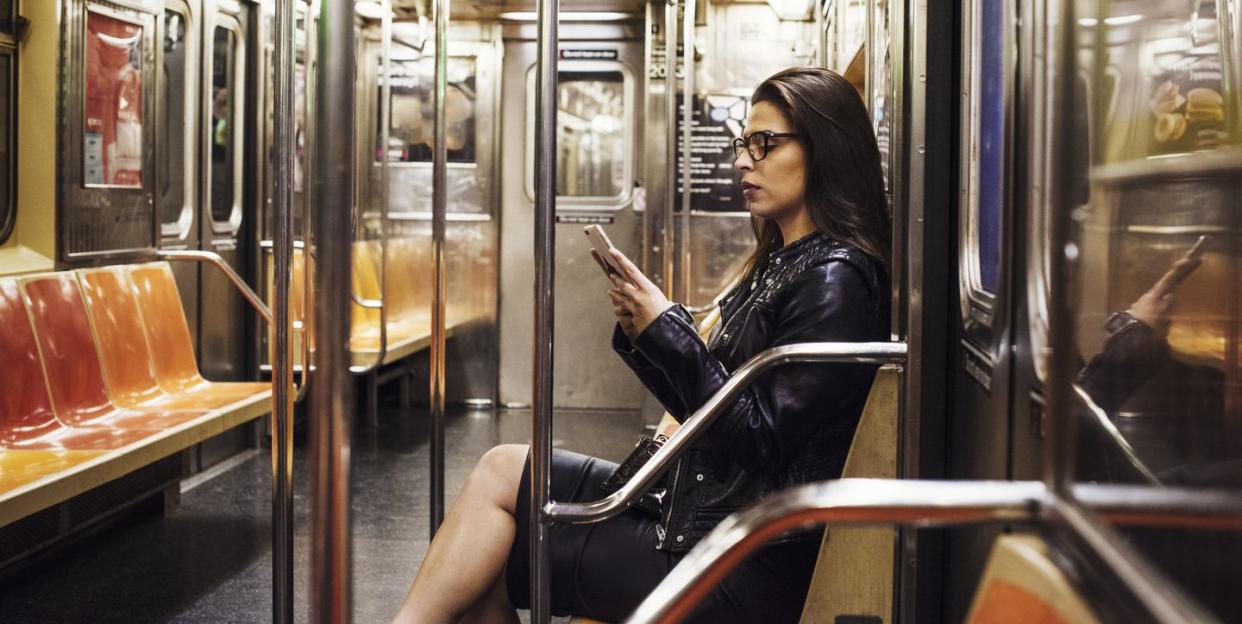What Does Social Distancing to Prevent the Spread of the New Coronavirus Mean?

Social distancing is recommended to help prevent the spread of novel coronavirus.
Experts say staying at least 6 feet away from others whenever possible will help slow the new coronavirus epidemic.
Going outside is still okay (and suggested for your mental and physical health) as long as you steer clear of crowded areas.
Ever since the novel coronavirus was declared a pandemic by the World Health Organization on March 11, life looks... different. Companies are asking employees to work from home, schools are temporarily shut, and stores and cultural institutions are closing temporarily. Places where lots of people congregate, like sporting events, parades, festivals, and concerts, are being cancelled. People are also putting travel plans on hold, and flights between the U.S. and Europe are temporarily banned.
So what does this mean for those plans you had to meet friends for dinner, go to that party, or do any of the things you usually do over the weekend, like head to the gym, a park, the movies, or a grocery store?
Since the virus that causes COVID-19 is mainly spread via respiratory droplets (thanks to a cough, a sneeze), experts recommend what’s called “social distancing,” which... can mean different things. For instance, in my community, common meeting spots, like the library, park district, and schools have closed. And many larger gatherings, like races and the NCAA March Madness tournament, have been cancelled. That’s a social distancing decision made for you.
History tells us this is smart when it comes to slowing the spread of a highly contagious disease. During the 1918 influenza pandemic, for example, Philadelphia was slow to institute social distancing measures, while St. Louis shut down gatherings early on, says Catherine Troisi, PhD, an infectious disease epidemiologist at the University of Texas Health Science Center at Houston. “As a result, St. Louis had many fewer infections and deaths,” she says.
Laying low doesn’t stop transmission entirely, but it can help flatten the curve (as in the growth curve of people testing positive for novel coronavirus). The reason this is so important is because, if everyone gets sick at once and there’s a large spike in cases, the healthcare system won’t be able to handle the influx of patients.
If you flatten the curve by slowing transmission, you’ll spread out the need for the resources and hopefully buy time until there’s effective antiviral medication and, eventually, a vaccine, Troisi says.
What we’re learning about novel coronavirus and COVID-19 is rapidly changing. That said, Troisi emphasizes that it's not enough to just stay home when you're sick. (Though you should definitely do that.)
“With this virus, we’re pretty sure that people are infectious before they have symptoms, which can expose other people,” says Troisi. And those people could be the ones most vulnerable to suffering complications from COVID-19, including the elderly, immunocompromised, and those with chronic diseases.
"People are not going to be hermits," says Troisi. "You have to take into consideration your particular circumstance and how much risk you’re willing to take." In many instances, the choice is yours.
Here’s your social distancing action plan, courtesy of Troisi:
Order in:
Delivery is your friend. Order groceries, order dinner, order wine. If you really want to be cautious, you can include “leave at my front door” in the delivery instructions and use the app to leave a tip. Use it as a chance to read or work through Netflix queue.
Skip the crowds.
Many cities and states have issued guidelines on what cancelling “larger” events means, and in some instances, that’s considered gatherings of 50, 100, 250, or 1,000 people, says Troisi. At the moment, these guidelines will differ depending on where you live. Check what, if any, rules are in effect. Personally, you might consider postponing that party you were going to throw, even if it’s only 20 people. Consider even limiting smaller gatherings, like playdates or going to a couple's place for dinner.
Definitely go outside.
At this time, you do not have to stay in your home, and doing so could have ramifications on your mental health. “I recommend going out in nature, whether it’s your backyard or a park that’s not so busy,” says Troisi. "Being outside is good for our mental health, and we know exercise, even walking, boosts the immune system, so it’s a win-win,” she says.
Give them their space.
Social distancing means putting space between you and others. “Right now, we’re learning that the virus might be able to linger in the air and spread via aerosol, but in general, we think that if you’re more than 6 feet from someone, you’re probably okay,” she says.
Wave to people.
Don’t shake hands, kiss hello, or hug. Doing so definitely puts you within that 6-foot range of someone else. And shaking hands is one way for someone to quite literally hand you a virus. Touching your face afterward would introduce the virus into your body.
Skip public transportation if you can.
Social distancing means that you're not taking public transportation, says Troisi. That's not possible for everyone, of course. In that case, do your best to put physical distance between you and other riders. As for shared rides, Troisi says, it's typically just one or two people in the car, so there's not much risk involved. "But if you yourself are sick, you don't want to [take a shared ride], period," adds Troisi.
Reassess as you go.
The info about COVID-19 is continually changing. “What you do this weekend may be different from what’s advisable next weekend,” says Troisi. Be prepared to change things up. Living in a time of uncertainty is certainly unnerving, but remember: It’s not going to be like this forever.
You Might Also Like

